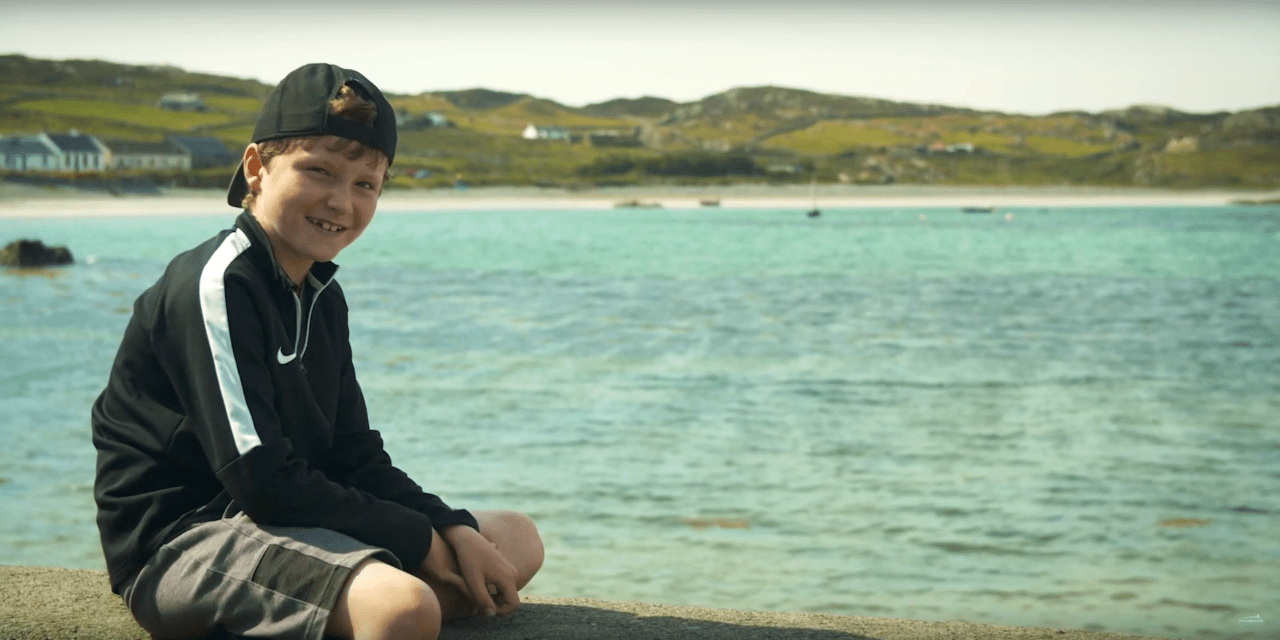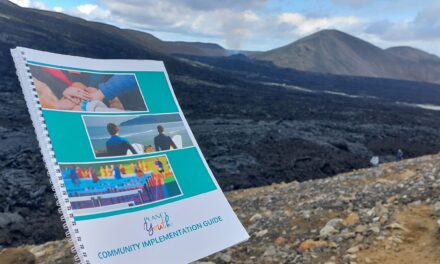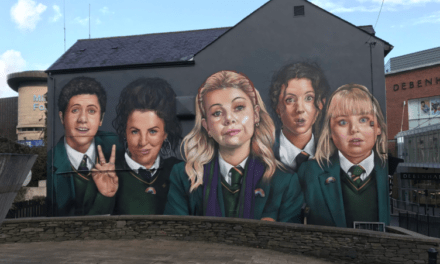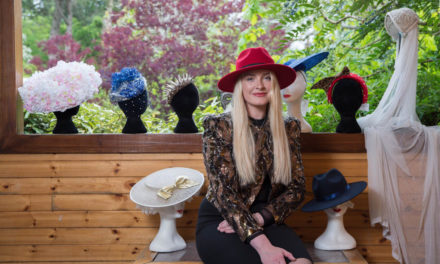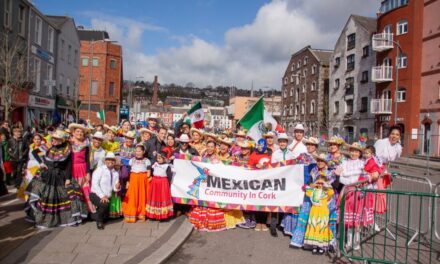A series of short films released in January capture the beautiful stillness of Inishbofin during the sun-soaked lockdown of 2020. Mercifully, despite reopening for tourism in July of last year, Inishbofin has recorded only two isolated cases of Covid-19 in the past 12 months and the island is currently Covid-free.
Few communities have been this fortunate. Figures from nearby Clare Island show that the virus can spread quickly when it does get into an island community.
Our report here is based on the film testimony and an interview conducted by LAOISE NEYLON with resident community worker Tara McMahon. The films show an island thrown into suspended animation by the pandemic:
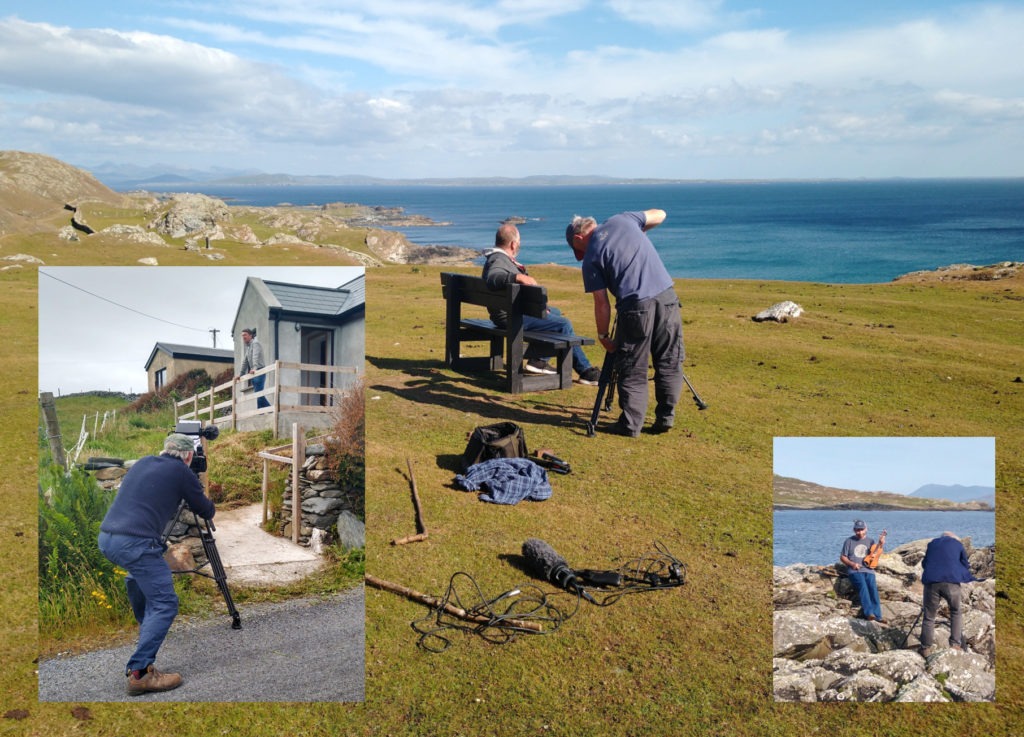
• ‘Inishbofin in Lockdown’ is a series of seven short films produced by Kieran Concannon of C-Board Films for Inishbofin Community Services Programme and funded by the Galway County Arts Office.
It is June 2020, a small ferry leaves the mainland at Cleggan Pier carrying cartons of milk, a sack of post and just two passengers. The boat lands on Inishbofin, where the pier is empty. The two passengers disembark and say good luck to the crew.
The lockdown of spring and summer 2020 was the quietest time on the island that James Coyne can ever recall. That makes it the quietest time in living memory because James is 91.
Back when he was young the population living on the island was much bigger. When he was at school “there were 80 on the roll book,” he recalls, sitting outside in the sun, taking a break from building a stone wall.
James enjoys the quiet on the island, with minor misgivings: “I miss my couple of pints in the evenings.”
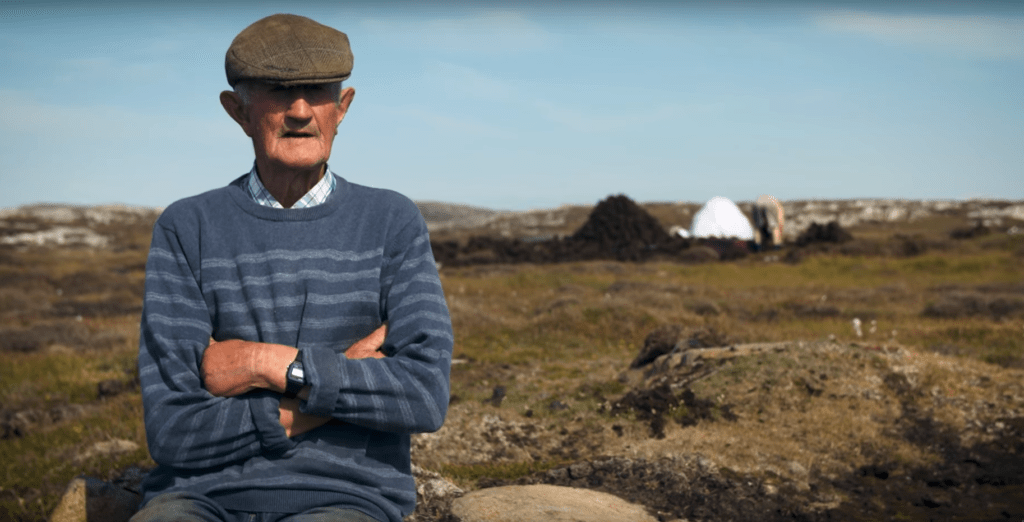
• James Coyne (91) is the oldest islander. He is pictured here taking a break from turf-cutting and building stone walls to chat to film-maker Kieran Concannon.
He misses matches too. The All Ireland semi-finals hang in the balance – will they go ahead, he wonders? “It was something to look forward to.”
It is a bright day with blue skies and James is in the bog digging turf. Life on Inishbofin is changing, he says. There won’t be any turf left for the next generation and the quality of it is declining too.
“The bogs are getting worn out, they are not as good as they used to be,” he says. The turf is too brittle.
Though he doesn’t say it, perhaps wind or solar power will power the next generation.
A Changing Way of Life
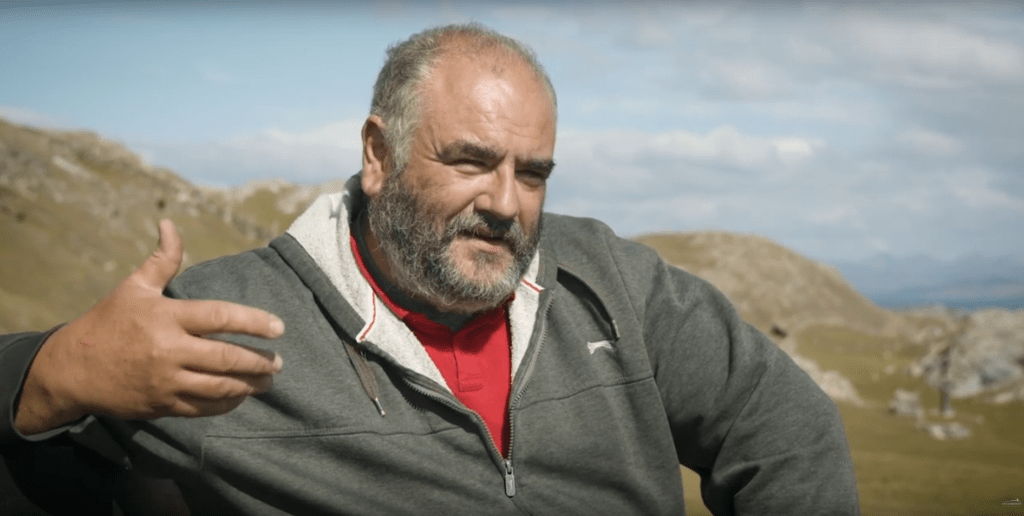
• Tommy Burke, historian and walking tour guide, has never seen it quieter.
“It is the first time in centuries that you had such a small number of people on the island,” says Tommy Burke who gives walking tours of Inishbofin.
The population of the island has been in decline for decades. When James was in school in the 1930s there were 80 schoolkids on Inishbofin. Nowadays there are 14, says Tara McMahon, the Community, Tourism and Marketing Officer for Inishbofin.
Tourism took off on the island in the 1970s, says Tara, and is now the main occupation of the islanders and, of course, summer is always their busiest time.
“It was really unusual for everybody to be able to enjoy this glorious weather without running around working,” she says.
Normally April and May are very busy but this year there are “zero tourists, so zero walking tours,” says Tommy. Locals catch up with each other while out walking though, he says: “People have more time to stop and chat but maybe we are running out of things to chat about.”
This time around the lockdown is harder on everyone, says Tara. Back in the spring and early summer of 2020, it was still a bit of a novelty.
“Part of it was lovely,” she says.
Financially the short season was hard on small businesses and she says they will struggle if they cannot open as normal this year.
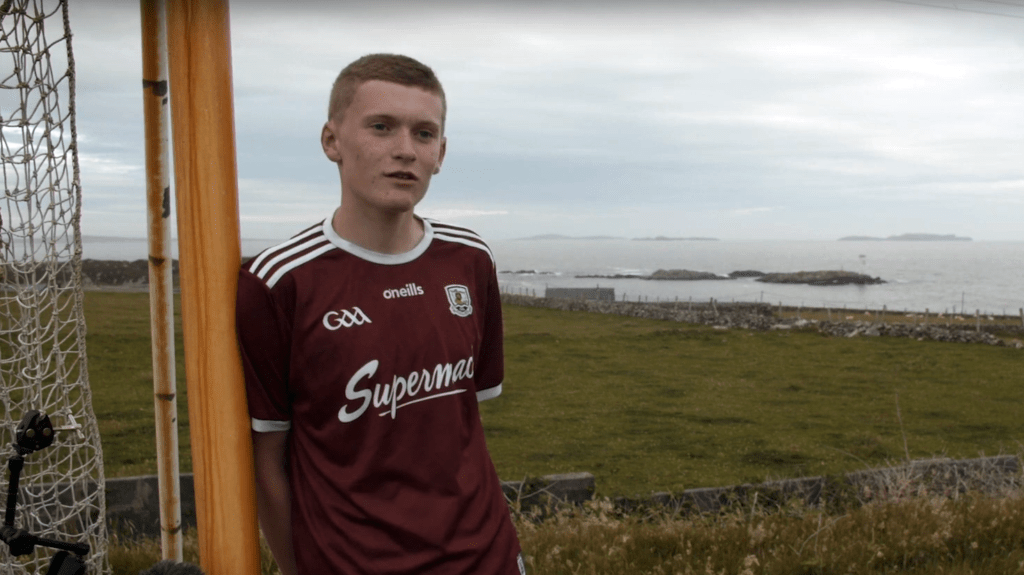
• Callum Day – one of the young people interviewed for ‘Inishbofin in Lockdown’.
Living in Lockdown
The short films capture more than the beauty of turquoise seas, green fields surrounded by stone walls and old-style, white cottages. The films involve the viewer in the intimate way of life on the island.
The islanders come together to work on community-based projects, like sprucing up historic sites. People are filmed cutting the grass in the graveyard.
Down by the pier, the young couple running the shop, Dave Anderson and Annieka Ward got engaged during the lockdown. Dave couldn’t travel back to the mainland to celebrate with his family, so he proposed while they were live on a skype call.
“He even managed to get a ring,” says Annieka, showing off a diamond ring, “very impressed.”
“I picked it out all on my own,” says Dave. He doesn’t tell us how he got the diamond ring out to the island.
“I’m finding the lockdown enjoyable,” says Callum Day, a young man in a Galway jersey playing football alone on the GAA pitch. He is taking advantage of extra free time to go kayaking with his brother and sister. “We have the island to ourselves,” he says, but he misses his friends and PE.
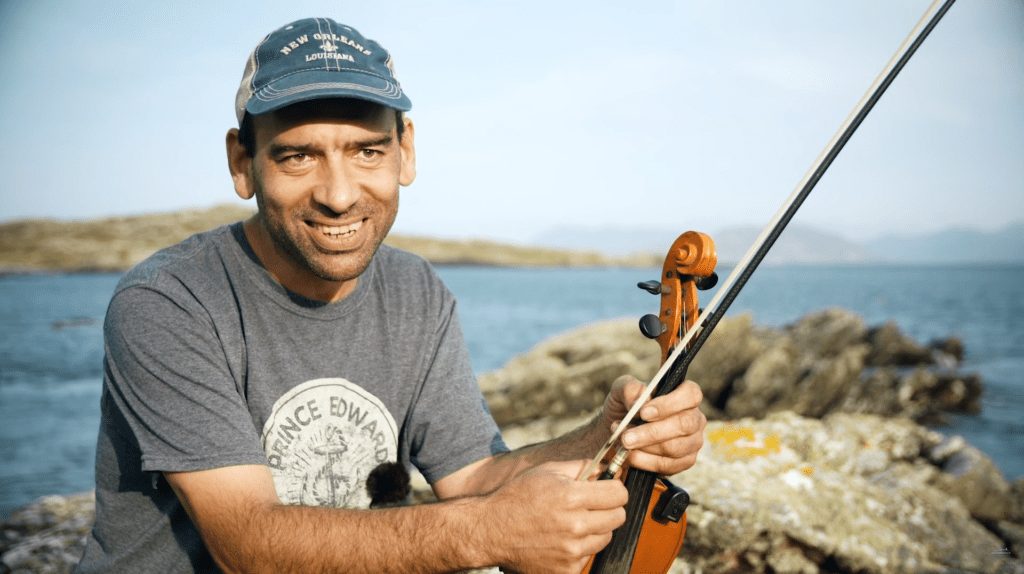
• Kevin Abeyta misses live music sessions, while enjoying the novelty of having “the island to ourselves”.
Kevin Abyeta plays a few tunes on the fiddle. He says there haven’t been any sessions during lockdown and he misses them.
The lack of music has really been noticed, says Tommy, “because it is something we were spoiled for.”
Kevin compares the lockdown to snow in wintertime – it might look nice but it prevents you from doing things: “It’s just in the way you know. But apart from that, we have the island to ourselves.”
Staying Covid Free
Back in 1919 the Spanish Flu got onto Inishbofin and “wreaked havoc,” says Tommy. “For a small community, it is hard to believe that there were three coffins in front of the altar at the one time – all young people.”
“There was a terrible cholera outbreak in 1834 that wiped out a lot of people. The famine didn’t have a huge effect, but there was a terrible fever in the 1850s, in the years after the famine. So, we’re no strangers to these things, and you get over them, but it takes time.”
There is a high population of elderly people on the island, so everyone was really worried about Covid-19 making it onto the island, says Tara.
“We are so conscious of the dangers of bringing it in. There is a heightened sense of awareness,” she says. The two cases to date did not lead to it spreading.
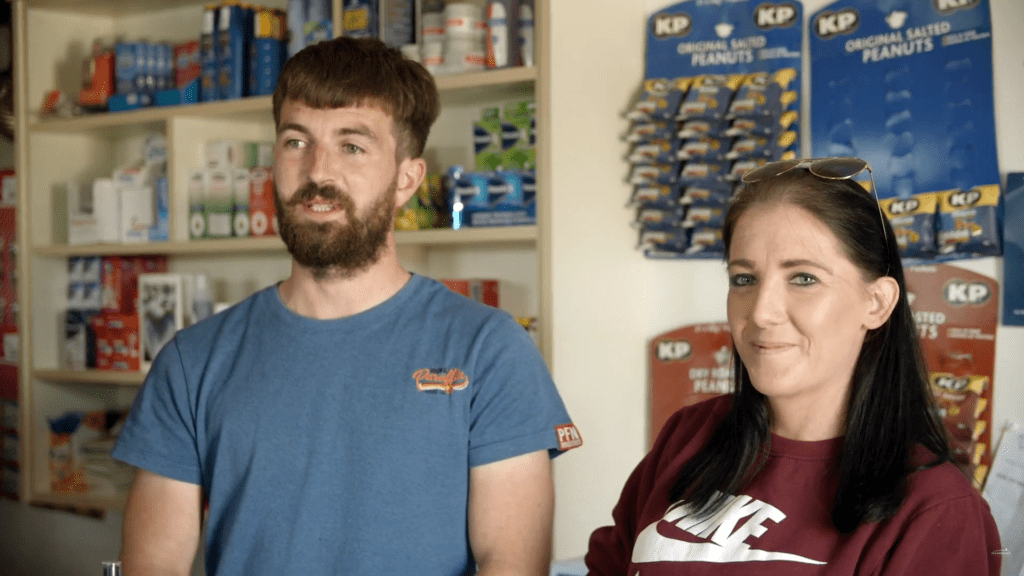
• Shopkeepers Dave Anderson and Annieka Ward.
One of the films shows the island’s children chatting to each other on the road while maintaining the 2-metre distance.
Meanwhile Dave and Anneika are delivering shopping to older people, who are cocooning. All the locals have respected the rules with social distancing and hand sanitising. But the couple worried about keeping the locals safe once they reopen to tourism, says Anneika.
Initially, the government planned that the islands would remain closed for a few weeks longer than the mainland. Tara says people wanted that extra time because they were fearful of reopening. Then the government suddenly decided that the whole country would reopen together on June 29th. That threw the islanders, she says. “There was no little buffer that we thought we would have.”
But they managed to keep the virus out throughout the entire summer. “It was incredible it didn’t come in, considering the island was really busy in July and August,” says Tara. She thinks it is a mix of good luck as well as both the locals and the visitors being very careful.
A lot of the visitors are people who come back every summer and are very respectful of the island and they were also extremely cautious, she says. There is a sense of safety and security living on the island, both in general and with Covid-19, says Tara: “Everyone is really connected, it’s a real community.”
On Youtube: http://bit.ly/BofinLocked
On Twitter & Facebook: https://m.facebook.com/Inishbofin/ & @VisitInishbofin
Filming by: @cboardfilms
Community funding: Inishbofin receives support through the Department of Rural and Community Development, including from the Community Services Programme, a programme that funds over 400 community and social enterprise projects across the State. More info: http://bit.ly/Gov-CSP

